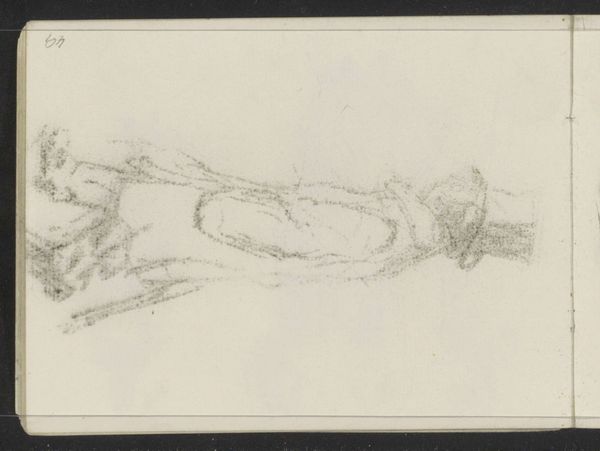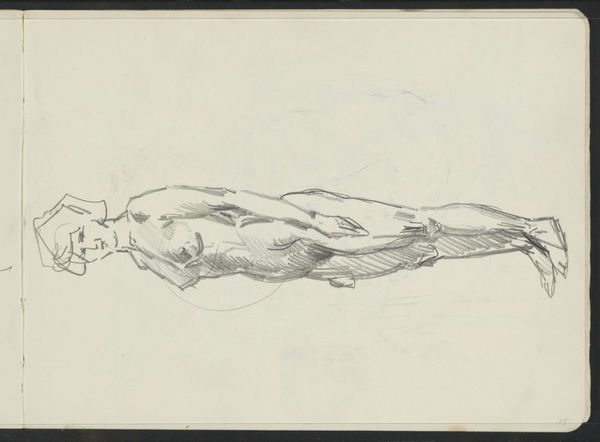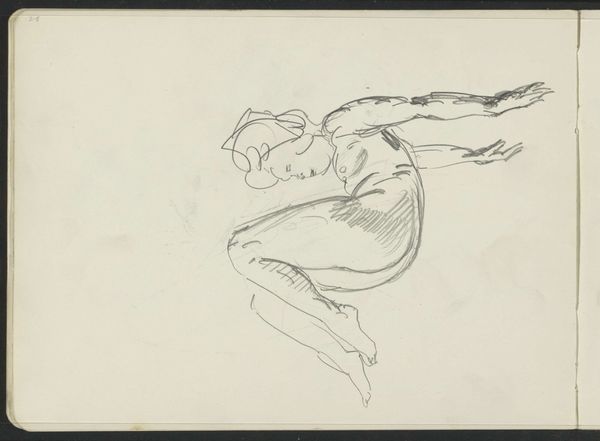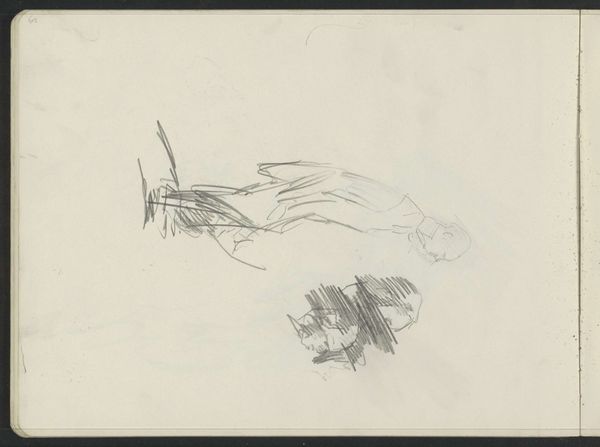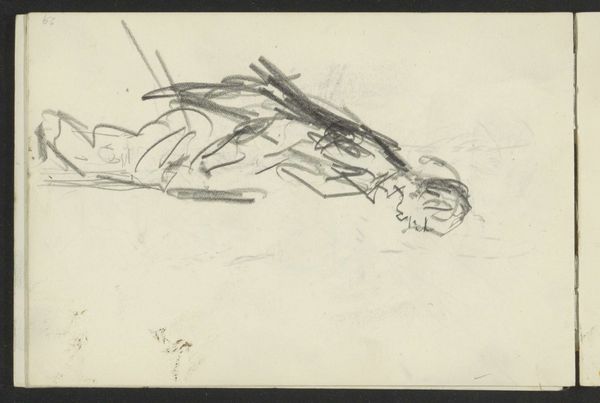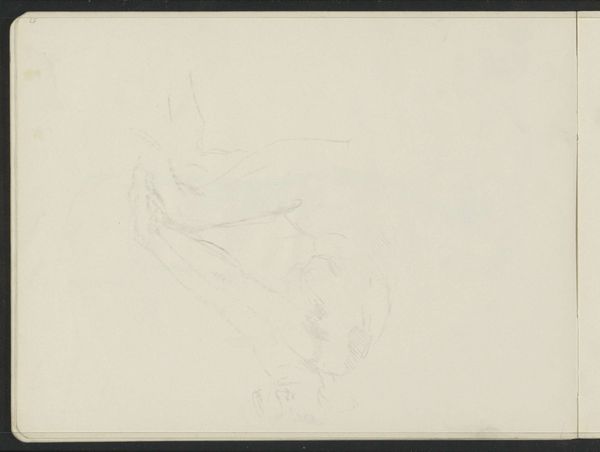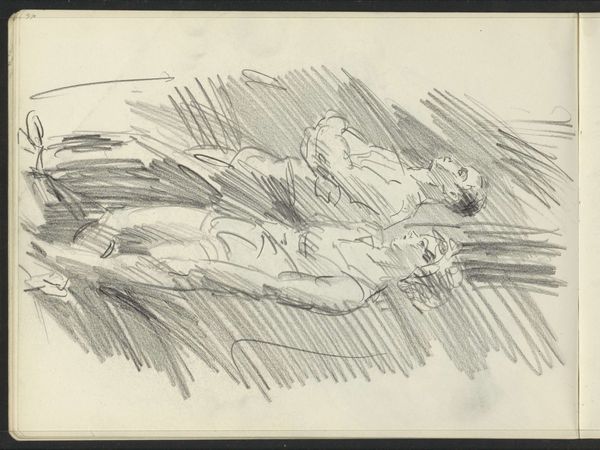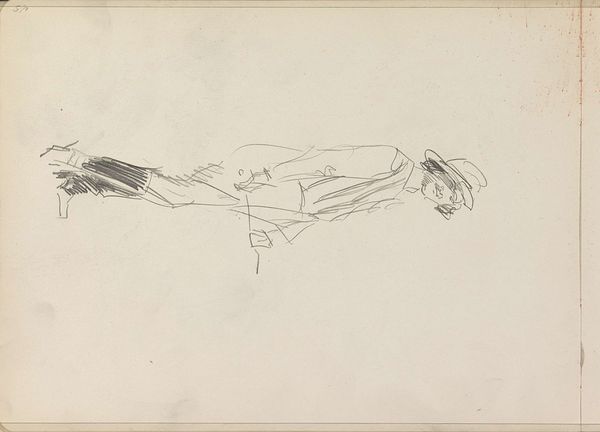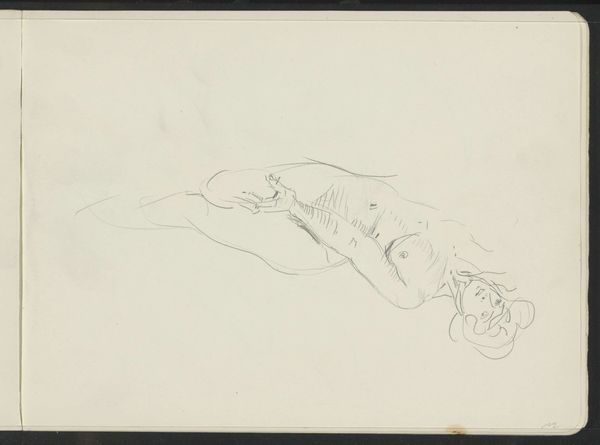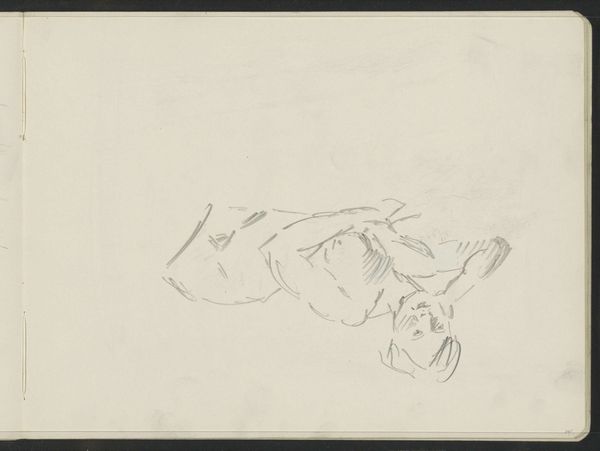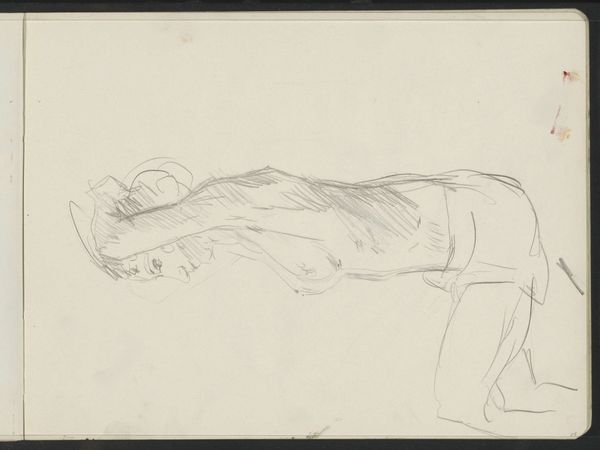
drawing, paper, pencil
#
drawing
#
figuration
#
paper
#
pencil
#
nude
#
realism
Copyright: Rijks Museum: Open Domain
Editor: Here we have Isaac Israels’ “Liggend vrouwelijk naakt, mogelijk slapend,” or “Reclining Female Nude, possibly Sleeping,” a pencil drawing on paper dating from around 1915-1925. The softness of the lines gives it a relaxed and intimate feel. What do you see in this piece, especially in how the composition contributes to its overall effect? Curator: Observe how the artist meticulously uses line weight to define the contours of the figure, creating a visual rhythm. The heavier lines articulate the points of contact and compression between the body and the surface, grounding the subject in a palpable reality. Lighter, more evanescent strokes model the volumes, hinting at the underlying musculature and bone structure without fully committing to a neoclassical idealism. Editor: So it’s the balance of these heavier and lighter lines that create the form? Curator: Precisely. The restricted tonal range compels us to scrutinize the subtlety of each mark. Consider, too, the negative space: its careful distribution serves to frame and enhance the reclining form, transforming the emptiness into an active compositional element. The interplay between the figure and the background becomes a dance of presence and absence, emphasizing the deliberate artistry in shaping the viewer's perception. Editor: That's interesting. I was so focused on the figure itself, I didn't fully appreciate how the space around it contributes to the overall effect. Curator: The choice of medium also plays a pivotal role. Pencil, with its capacity for both precision and ambiguity, enables Israels to explore the nuanced gradations of light and shadow, evoking a sense of ephemerality and fleeting observation. It reminds us of the temporality inherent in both artistic creation and human existence. Editor: I hadn’t considered that connection before, but it makes perfect sense given the subject. Thank you! I learned to focus not just on the lines themselves, but also on the relationship between positive and negative space, and how those choices are meaningful.
Comments
No comments
Be the first to comment and join the conversation on the ultimate creative platform.
